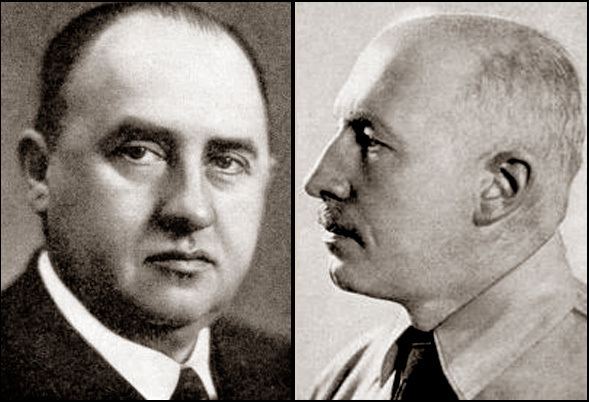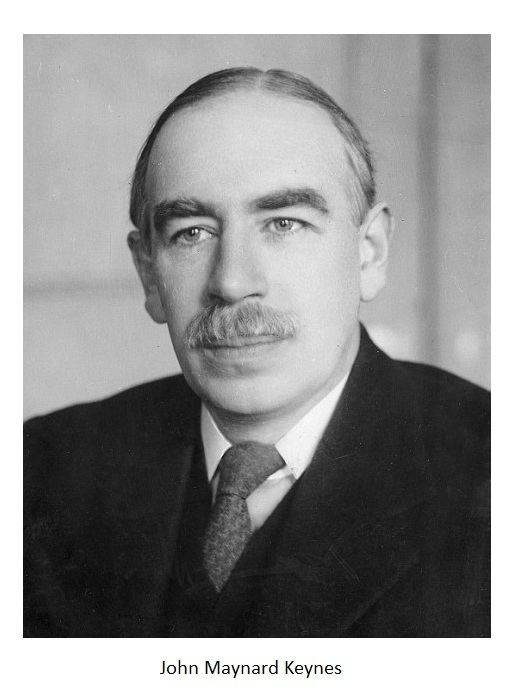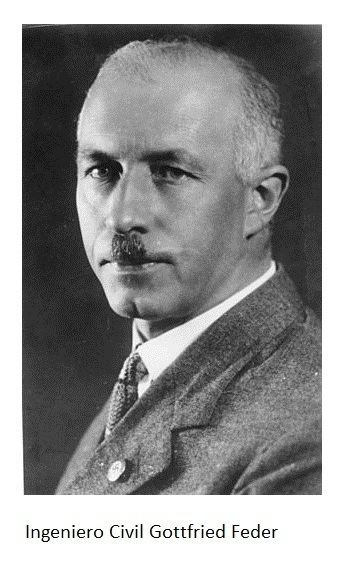Nationality German School or tradition National Socialism | Name Gottfried Feder | |
 | ||
Contributions National SocialismStrasserismAnti-capitalismPlanned community Education Humboldt University of Berlin Books The Programme of the NS, Manifesto for Breaking, Hitler's Official Program, Hitler's Official Program Similar People | ||
Gottfried Feder | Wikipedia audio article
Gottfried Feder (27 January 1883 – 24 September 1941) was a German economist and one of the early key members of the Nazi Party. He was their economic theoretician. Initially, it was his lecture in 1919 that drew Hitler into the party.
Contents

Gottfried Feder
Biography

Feder was born in Wurzburg, Germany on 27 January 1883 as the son of civil servant Hanse Feder and Mathilde Feder (nee Luz). After attending humanistic schools in Ansbach and Munich, he studied engineering in Berlin and Zurich (Switzerland); after graduating, he founded a construction company in 1908 that subsequently was particularly active in Bulgaria where it built a number of official buildings.

From 1917 on, Feder studied financial politics and economics on his own; he developed a hostility towards wealthy bankers during World War I and wrote a "manifesto on breaking the shackles of interest" ("Brechung der Zinsknechtschaft") in 1919. This was soon followed by the founding of a "task force" dedicated to those goals that demanded a nationalisation of all banks and an abolition of interest.
In the same year, Feder, together with Anton Drexler, Dietrich Eckart and Karl Harrer, was involved in the founding of the Deutsche Arbeiterpartei (German Workers' Party-DAP). Adolf Hitler met him in summer 1919 while he was in an anti-Bolshevik training course at Munich university—funded by the army and organized by Major Karl Mayr—and Feder became his mentor in finance and economics. He was the inspirer of Hitler's opposition to "Jewish finance capitalism." Delivering political courses alongside Feder was Karl Alexander von Muller (son of Bavaria's Culture Minister) who spotted Hitler's oratorical ability and forwarded his name as a political instructor for the army—an important step in Hitler's career.
1920s
In February 1920, together with Adolf Hitler and Anton Drexler, Feder drafted the so-called "25 points" which summed up the party's views, and introduced his own anti-capitalist views into the program. When the paper was announced on 24 February 1920, more than 2,000 people attended the rally. In an attempt to make the party more broadly appealing to larger segments of the population, the DAP was renamed in February 1920 to the Nationalsozialistische Deutsche Arbeiterpartei (National Socialist German Workers' Party, NSDAP), more commonly known as the Nazi Party.
Feder took part in the party's Beer Hall Putsch in November 1923. After Hitler's arrest, he remained one of the leaders of the party and was elected to the Reichstag in 1924, where he stayed until 1936 and demanded the freezing of interest rates and dispossession of Jewish citizens. He remained one of the leaders of the anti-capitalistic wing of the NSDAP, and published several papers, including "National and social bases of the German state" (1920), "Das Programm der NSDAP und seine weltanschaulichen Grundlagen" ("The programme of the NSDAP and the world views it's based on," 1927) and "Was will Adolf Hitler?" ("What does Adolf Hitler want?", 1931).
Feder briefly dominated the NSDAP's official views on financial politics, but after he became chairman of the party's economic council in 1931, his anti-capitalist views led to a great decline in financial support from Germany's major industrialists. Following pressure from Walther Funk, Albert Voegler, Gustav Krupp, Friedrich Flick, Fritz Thyssen, Hjalmar Schacht and Emil Kirdorf, Hitler decided to move the party away from Feder's economic views; when Hitler became Reichskanzler in 1933, he appointed Feder as under-secretary at the ministry of economics in July. This disappointed Feder, who had hoped for a much higher position.
Nazi Germany
Feder continued to write papers, putting out "Kampf gegen die Hochfinanz" ("The Fight against high finance", 1933) and the anti-semitic "Die Juden" ("The Jews," 1933); in 1934, he became Reichskommissar (Reich commissioner).
In 1939 he wrote Die Neue Stadt (the New City). This can be considered a Nazi attempt at Garden City building. Here he proposed creating agricultural cities of 20,000 people divided into nine autonomous units and surrounded by agricultural areas. Each city was to be fully autonomous and self-sufficient; detailed plans for daily living and urban amenities are taken into consideration. Unlike other garden city theorists, he believed that urban areas could be reformed by subdividing the existing built environment into self-sufficient neighborhoods. This idea of creating clusters of self-contained neighbourhoods forming a mid-sized city was popularised by Uzo Nishiyama in Japan. It would later be applied in the era of Japanese New Town construction.
However, despite its consistency with the blood and soil ideology of the Nazis, his concept of decentralized factories was successfully opposed by both generals and Junkers. Generals objected because it interfered with rearmament, and Junkers because it would prevent their exploiting their estates for the international market.
After the Night of the Long Knives in June 1934, where SA leaders like Ernst Rohm and left-leaning party officials like Gregor Strasser were liquidated, Feder began to withdraw from the government, finally becoming a professor at the Technische Hochschule in Berlin in December 1936, where he stayed until his death in Murnau, Bavaria, on 24 September 1941.
